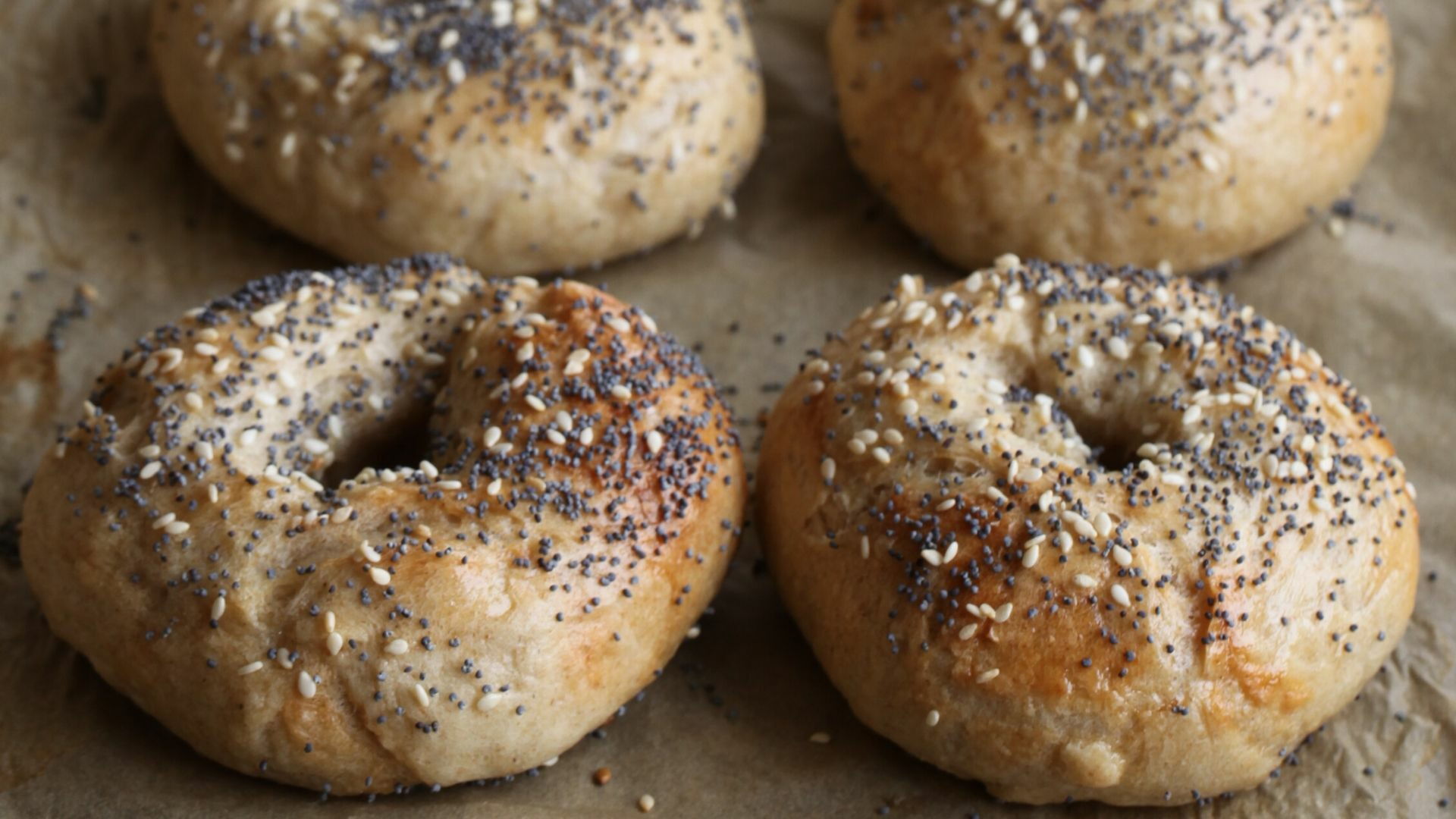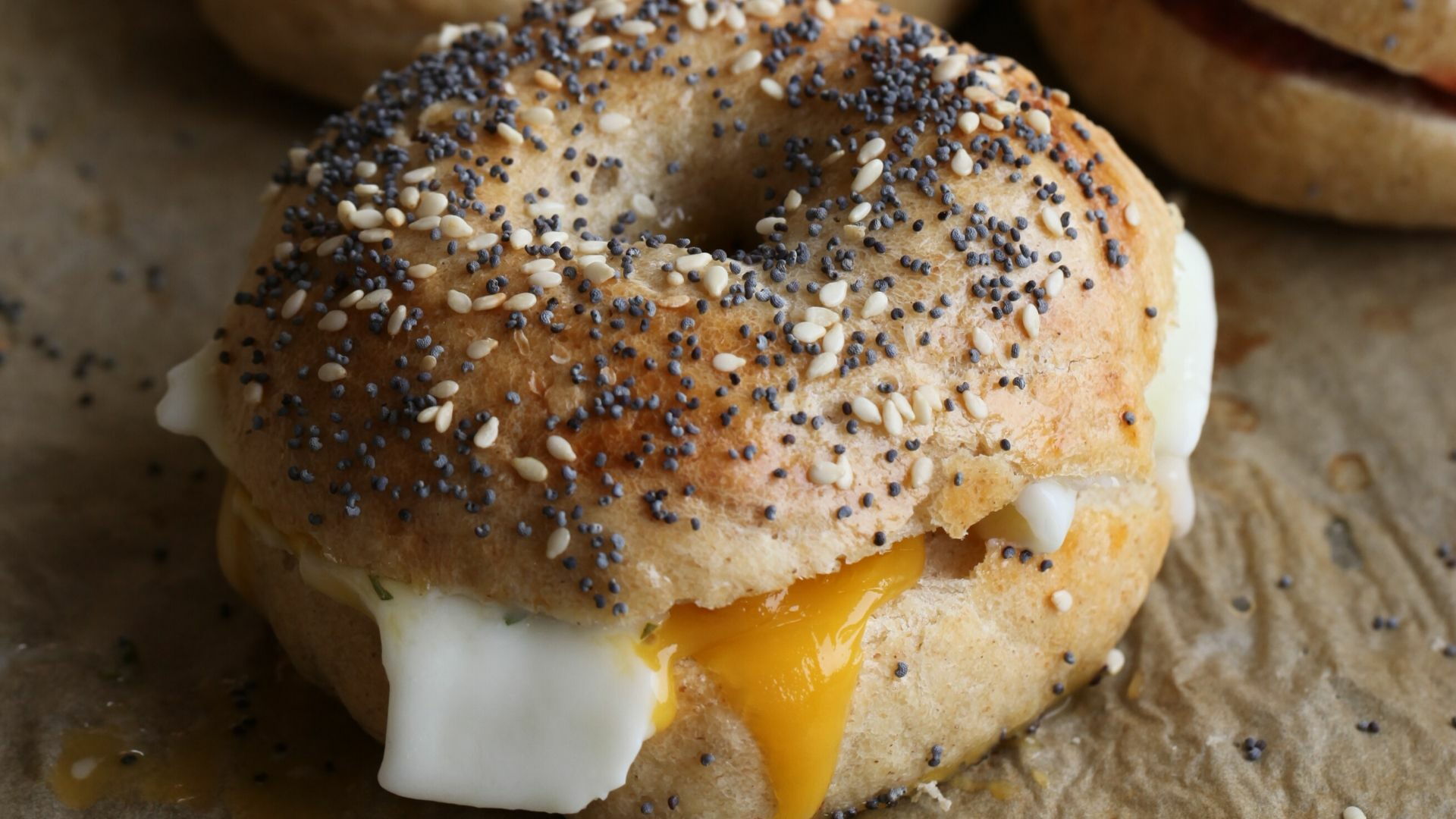Bagels: history and characteristics

The bagel is a leavened dough sandwich typical of Polish and Jewish cuisine. It has the shape of a large ring and needs a particular cooking method since it is first boiled in water and then baked in the oven.
Although originating from the Polish tradition, bagels have become very famous all over the world. We hear about the bagels for the first time in 1610, within the "Community provisions" of Krakow, about certain ring-shaped loaves, given to women on the occasion of childbirth, as a wish for good luck. They were then introduced to the United States by Polish immigrants and, from there, they quickly spread to Canada, the United Kingdom, and Germany, especially in cities with a good percentage of the Jewish population, such as New York, London, Montreal, and Berlin
How leavening works
Besides, making bread at home is a practice that should be favored, even more, if we use natural leavening to make it. Even if it is not possible to make bread at home, it is always good to make sure that what you buy has been made with quality wholemeal or semi-wholemeal flours - to preserve its dietary fiber and its countless benefits - and that the leavening has been obtained with the use of mother yeast or leavening through fruit fermentation. This is because this type of leavening makes the bread much more digestible thanks to the work of bacterial populations.
The growth of natural yeast and bread is based precisely on these yeasts and bacteria present in flour and on their work of decomposition of starch and sugars to feed on them. This decomposition leads to the formation of carbon dioxide and alcohol (ethanol). Carbon dioxide is then imprisoned by the gluten (protein) of the flour and with heat, it expands thus making the yeast and bread increase in volume. The classic brewer's yeast consists mainly of colonies of Saccharomyces cerevisiae, while in the mother yeast there are several species of Saccharomyces and Candida as well as various lactic bacteria of the genera Pediococcus, Leuconostoc, Lactobacillus, and Weissella.
Benefits of using sourdough
Among the benefits of the mother yeast, besides the better tolerability and digestibility, we mention other beneficial functions given by its bacterial population:
- Bread made with natural yeast causes a lower increase in blood sugar levels and a lower production of insulin, thanks to a glycemic index equal to half of the traditional bread. Gluten is completely decomposed.
- Increased absorption of essential nutrients such as calcium, magnesium, iron, zinc, antioxidants, folic acid, and other B vitamins.
- Reduction of the phytic acid level.
- Reduction of protein particles that can cause wheat intolerance or allergy.
- They produce amino acids and γ-aminobutyric acid (GABA) capable of improving the nutritional value of the products.
- Bread made with natural yeast causes a lower increase in blood sugar levels and a lower production of insulin, thanks to a glycemic index equal to half of the traditional bread. Gluten is completely decomposed.
Easy and Fast Whole Wheat Bagels Recipe

With this simple and quick recipe of wholemeal bagels, making them at home will be a breeze.
Ingredients
- 450g Type 2 flour (semi-wholemeal)
- 200g fresh and active sourdough or 1 stick of fresh brewer's yeast
- 220g water at room temperature
- 9g salt
- 15g oil + 5g oil for the bowl
- 1 egg white
- Sesame and chia seeds
Preparation
- Mix flour, sourdough, and water or brewer's yeast dissolved in the water. Work for a while and then in the center of the mixture put salt and oil. Continue to work until it forms a stick.
- Pass the dough on a work surface, make a fold of reinforcement and then put it to rest in a lightly oiled bowl and cover with plastic wrap. Wait for the doubling, about 4-5 hours.
- Form many balls of dough of about 95g each, with these doses 10 bagels will come.
- Knead the pieces of dough first by squeezing them and then bringing the flaps from the outside to the inside to form a ball. Let stand on paper, in the oven turned off with the light on, until doubled.
- Meanwhile, boil 2L of water and you can add 1 teaspoon of barley malt if you want to get a more toasty aroma.
- Now work each ball by applying pressure in the center with your thumb and forefinger to create the classic shape of the bagels with a hole in the center. Dip a couple of bagels at a time and leave for 1 minute and a half. With a colander take the bagels and lay them again on parchment paper.
- Do this for each sandwich.
- Brush the surface with egg white and then sprinkle it with sesame seeds and chia seeds.
- Let it cook for 25 minutes in a preheated, static oven at 190 degrees.
- Remove from the oven and enjoy them, both hot and cold are perfect!
- Before storing them in an airtight container, make sure they are cold!
Macros 1/10
C 40g, P 10g, F 3g
Conclusions
Bagels are very versatile sandwiches, suitable for both savory and sweet fillings and mainly carbohydrate and low in fat. They are also perfect for eating as a post-workout meal together with a protein source. As we have seen, bread is not a food to sabotage if we use high-quality raw materials!
